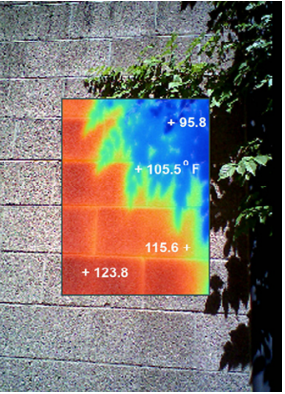Temperature has assuredly become a hot topic in offices throughout Brooklyn and Manhattan during the recent heat wave. Eco Brooklyn’s office is no exception to the heat. However, we have a unique approach to the problem.
Passive housing has been a cornerstone of environmental design since the ancient Greeks and Romans (check out this article on the history of passive housing: http://www.planetseed.com/relatedarticle/energy-efficient-building-passive-heating-and-cooling). While technology and techniques have become more advanced, many of the principles used by the ancients have stood the test of time. Most notably, this includes the use of exterior shades to protect from heat in the summer while allowing sunlight in during the winter.
Exterior shades differ from internal shades in a few major ways. Perhaps the biggest difference is that when using internal shades, the sunlight is allowed to enter the room through the window. The heat will be trapped inside of the shades. As it dissipates on the interior, the home is heated much faster.
The second major difference between interior and exterior shades is the dynamic ways one can utilize external shades and shutters. For example, the use of an overhang is an effective way of using angles to shade the windows during the summer when the sun is high. When the sun is lower in the winter, the sun can enter the room under the overhang.
Furthermore, this concept of exterior shading offers an opportunity for synergy – a mark of sustainability in the green building community. Currently, Eco Brooklyn’s offices employ the use of internal honeycomb shades, which are highly effective at absorbing heat. However, we have plans of making an even more effective and synergistic approach. Namely, we would like to install an exterior overhang to accomplish the above-stated goals; with one catch: We will install solar panels on the overhang to absorb the heat and reroute it to power the house. This is a great example of an integrated solar power system.
As global temperatures and sea levels continue to rise across the world (especially in NYC: http://www.huffingtonpost.com/2013/06/10/new-york-city-flooding-by-2050_n_3417348.html), New Yorkers will be expected to assume a heavy burden of increasing energy bills. One way to combat these growing expenses is by building green. Passive housing is a great way to not only take advantage of the Earth’s natural energy, but prevent it from escaping your house as well.
Another approach to natural cooling is to use a green facade, or living wall. This concept involves the use of growing vines and other vegetation in a vertical direction to cover a wall or other surface of a building that is in direct sunlight. Green walls can vary in design and allow room for creativity. For further information on green walls check out this link: http://www.greenscreen.com/direct/GS_AdvancedGreenFacadeDesign.pdf

Christopher Jeffrey
